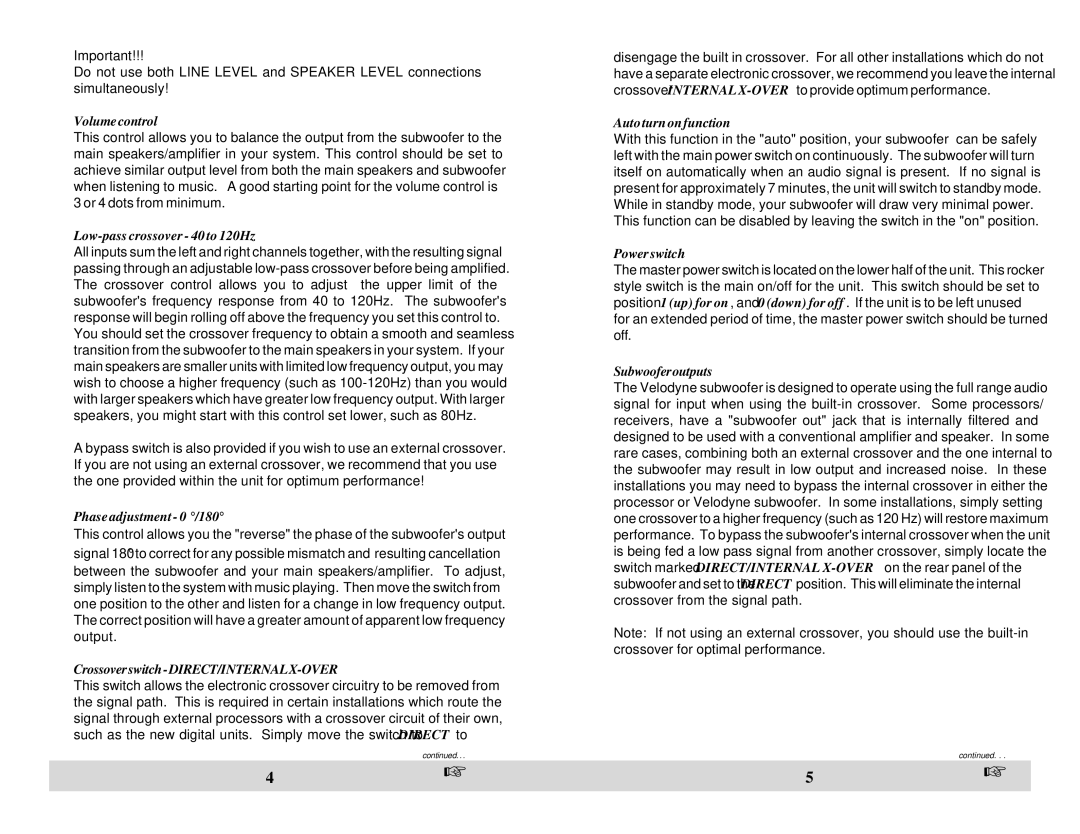VLF-810, VLF-1012 specifications
Velodyne Acoustics has been a prominent name in the audio industry, especially known for its innovative subwoofers and high-fidelity audio products. Among its product offerings, the VLF-1012 and VLF-810 subwoofers stand out for their exceptional performance and robust technology. These models are designed to deliver tremendous bass response and are suitable for a wide range of listening environments, including home theaters and music systems.The Velodyne VLF-1012 features a 12-inch driver that is engineered to produce deep, powerful bass without distortion. It incorporates an advanced digital signal processing (DSP) technology, allowing for improved frequency response and enhanced audio clarity. Its compact design and sophisticated enclosure make it easy to integrate into various setups while preserving sound integrity. With a peak power output of 1000 watts, the VLF-1012 ensures that even the most demanding soundtracks are reproduced with impactful depth and precision.
On the other hand, the VLF-810 houses an impressive 10-inch driver and maintains similar technology features as the VLF-1012. With a peak power output of 750 watts, it also provides strong, finely-tuned bass performance, particularly ideal for smaller spaces where larger units may overwhelm the room acoustics. Users of the VLF-810 can appreciate its ability to deliver rich lows without compromising on clarity, creating an immersive listening experience.
Both models are equipped with Velodyne's Smart Speaker technology, which features automatic room equalization. This technology analyzes the acoustic characteristics of the room and adjusts the subwoofer’s output accordingly, ensuring that users receive optimal sound quality. Additionally, they come with a user-friendly remote control that allows for easy adjustment of volume and frequency settings from a distance.
Durability and aesthetic appeal are also considered in both the VLF-1012 and VLF-810 designs, featuring sleek cabinets that blend well with modern home décor. The build quality is commendable, ensuring longevity even with regular use.
In summary, the Velodyne Acoustics VLF-1012 and VLF-810 subwoofers are both impressive options for audiophiles seeking quality bass performance. With advanced features such as DSP technology, Smart Speaker technology, and robust build quality, they cater to a wide audience looking to enhance their audio experience.
